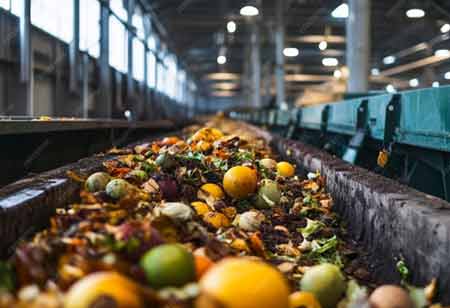THANK YOU FOR SUBSCRIBING
Be first to read the latest tech news, Industry Leader's Insights, and CIO interviews of medium and large enterprises exclusively from Food and Beverage Tech Review
Mega Trends to Shape the Food Sector
Following high profile incidents, more engaged and knowledgeable consumers are demanding higher standards in food safety management.

By
Food and Beverages Tech Review | Thursday, September 17, 2020
Stay ahead of the industry with exclusive feature stories on the top companies, expert insights and the latest news delivered straight to your inbox. Subscribe today.
Food agencies, governments, and industries dealing with eatables have pledged to change the way food businesses are monitored by 2020. Food processing, packaging, and management will be subject to stricter sentencing guidelines, with drastically increased fines for safety issues.
FREMONT, CA: The food industry continues to grow as reports by the Food Standards Agency (FSA) show that the number of businesses in the sector has increased by 6.7 percent between 2010-11 and 2014-15. The reality that consumers are dining out more often has led experts to suggest that the food service sector will be worth £56.3 billion by 2019. As the food sector is on its rise, the FSA has taken preventive measures to change how it monitors food businesses by 2020, particularly when it comes to packaging and safety. Concerns revolving the existing system of local authority examination and enforcement have led administrators to think of new ways of working in an era of higher caseloads and reduced budgets.
Check This Out: Top Food Processing and Packaging Companies
The four top-line trends identified are:
1. Consumers Demanding Better Food Safety:
Following high profile incidents, more engaged and knowledgeable consumers are demanding higher standards in food safety management. The reputational damage by food safety failures is greater than ever, with the FSA introducing new sentencing guidelines. Proactive businesses should implement better food safety measures and use high standards to tackle the situation.
2. Dining Trends Are Changing:
More and more people are eating out, which brings challenges to restaurants to serve more customers and on suppliers to deliver fresh ingredients year-round. Consumer preferences are constantly changing, as a result, keeping up with changing customer needs is essential to build a successful business. The maintenance of food safety standards while keeping up with the demands is also crucial.
3. Traceability Is the Key to Experience:
Scandalous issues around fraud in the food supply chain have increased the concerns for traceability in it. Customers are also increasingly looking for healthy, high quality, and locally sourced ingredients. Together, all the concerns are driving a need for greater reviewing of supply chains to ensure that food is monitored from field to fork.
4. The Future of Food Safety Is Digital:
Paper-based checks and records in contemporary kitchens are inefficient, time-consuming, and prone to human error. Digital checklists, automated monitoring, and IoT-based sensors will substitute paper and allow businesses to monitor and control every facet of routine tasks and compliance administration.
I agree We use cookies on this website to enhance your user experience. By clicking any link on this page you are giving your consent for us to set cookies. More info


However, if you would like to share the information in this article, you may use the link below:
https://www.fbtechreviewapac.com/news/mega-trends-to-shape-the-food-sector-nwid-284.html





